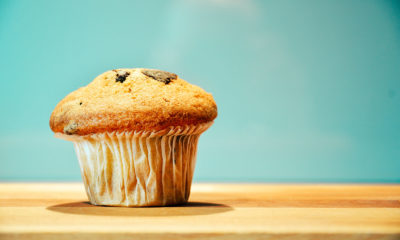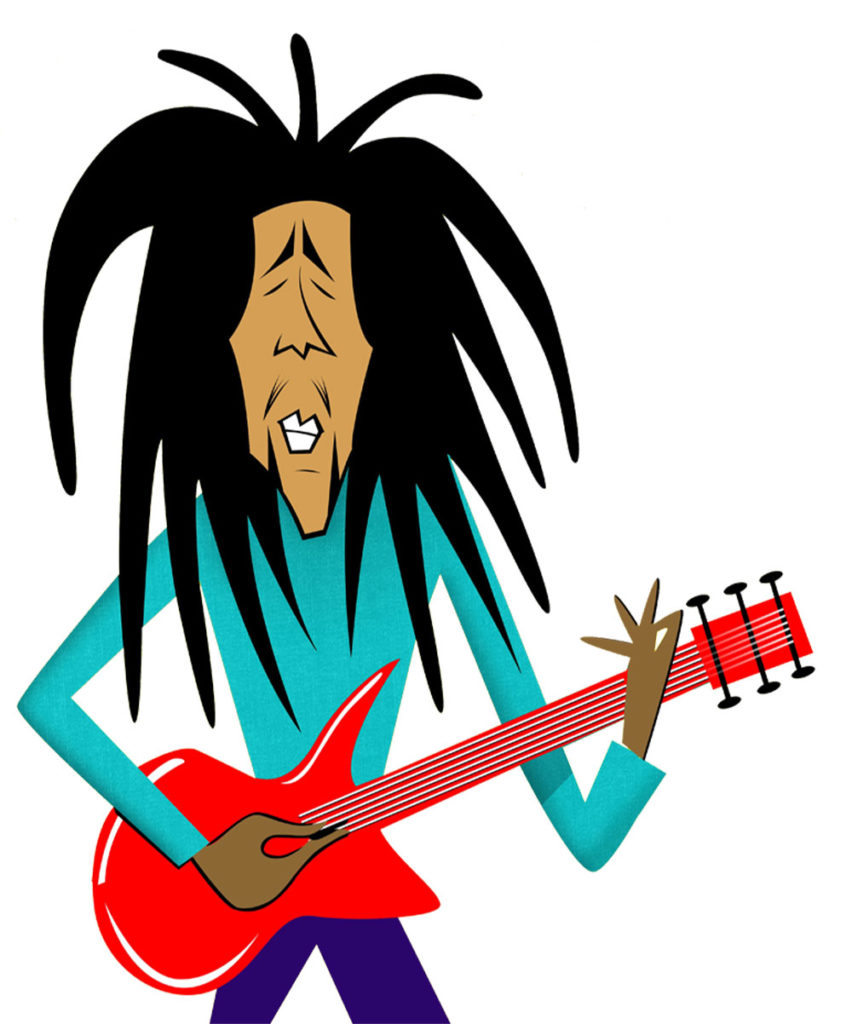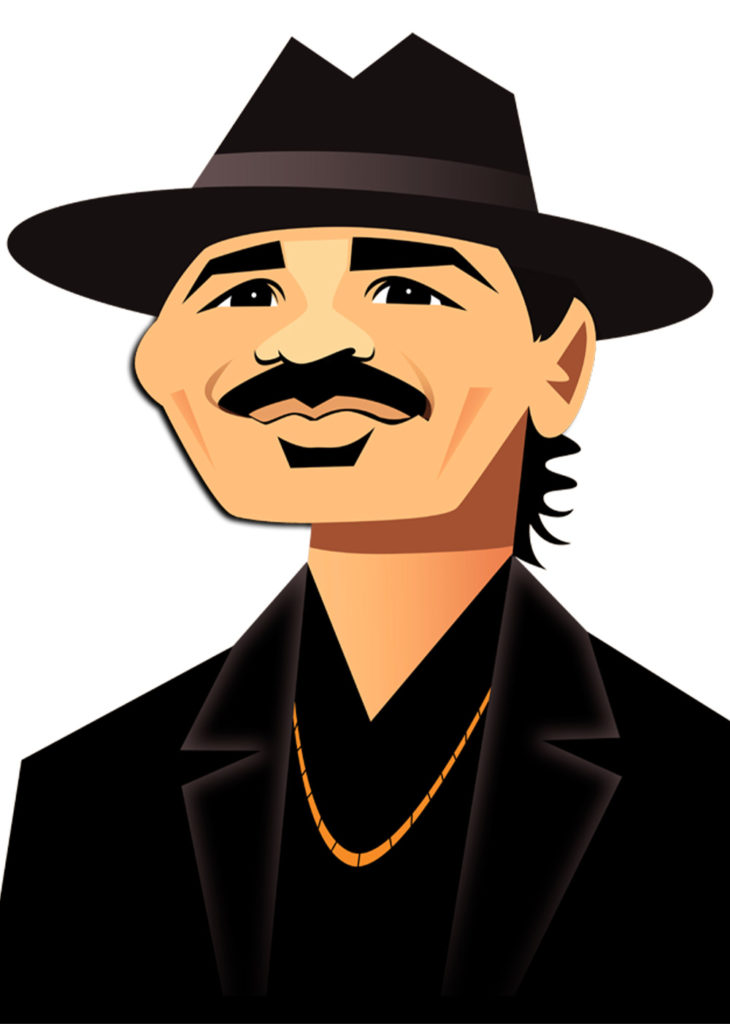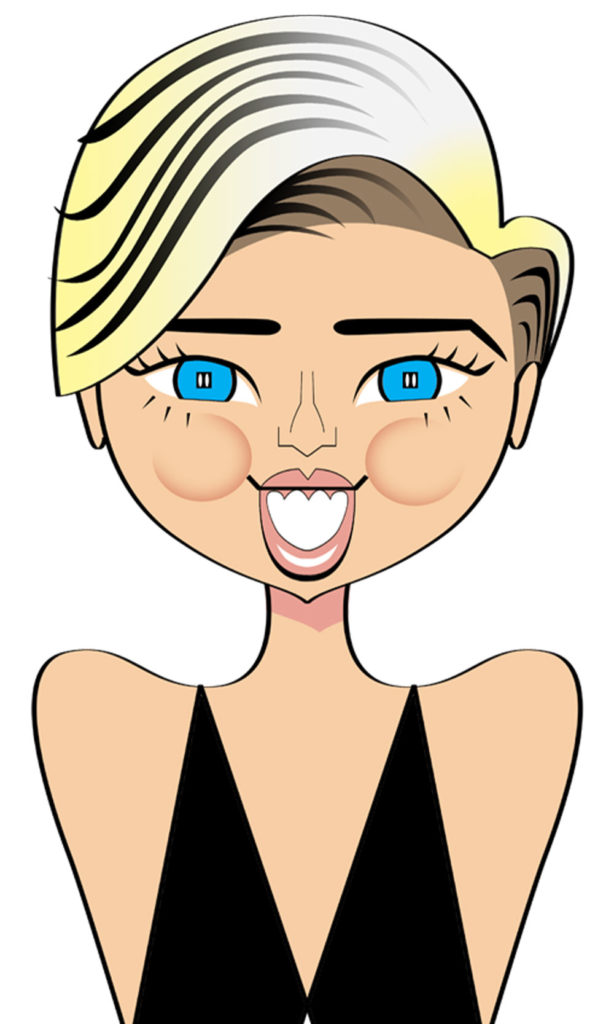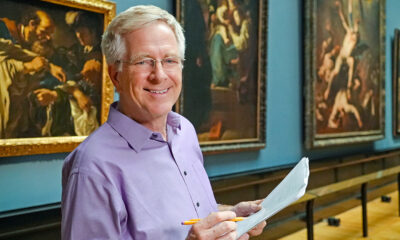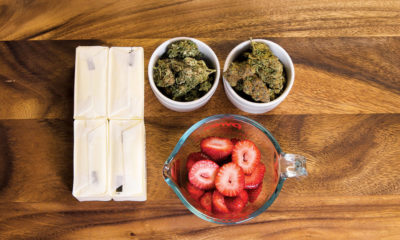Cannabis, Celebrity & Culture
For the better part of a century, the famous have impacted how weed is perceived in the United States. Is it working?
Arguably, the greatest lubricant for cannabis normalization hasn’t been enthusiasts, activists or lawmakers, but pop culture. Of course, culture alone hasn’t been enough to usher in legalization (if it had, it would’ve happened much sooner). But it’s fair to say that the soft (but undeniable) advocacy employed by screen actors, artists, musicians and others, as well as depictions in different kinds of media, have helped everyday people to see that the kind herb may not be so bad as Uncle Sam says it is, after all.
When superstar Kacey Musgraves’ Grammy-winning “Same Trailer, Different Park” dropped in 2013, many in the country music world were scandalized by the then-24-year-old’s multiple references to smoking weed. She’s hardly the first in the genre to toke, as Willie Nelson has of course been loud and proud his entire career. But, based on optics alone—she’s a young white woman from Texas performing in a space closely associated with politically conservative Americans—her immediate differences from other prominent musicians who famously loved to toke up set her apart.
Millions of fans, some of whom felt that the culture surrounding country music was a bit too uptight, instantly loved her for it, while still, others found reason to cast blame. “You’re so less attractive to me now,” one commenter wrote on a photo Musgraves posted on Instagram in 2019, which showed her exhaling smoke blissfully with a joint in hand. The singer clapped back instantly: “Oh, nooo! I only exist purely for your pleasure. What am I gonna do?” with a thinking emoji in tandem. #savage
But weed hasn’t hurt Musgraves, who has 2.4 million Instagram followers. If anything, it’s only helped. She’s since racked up awards and made best-selling albums. She’s even selling branded rolling papers—appropriately named “Slow Burn” after one of her most famous songs—as well as a lighter and grinder.
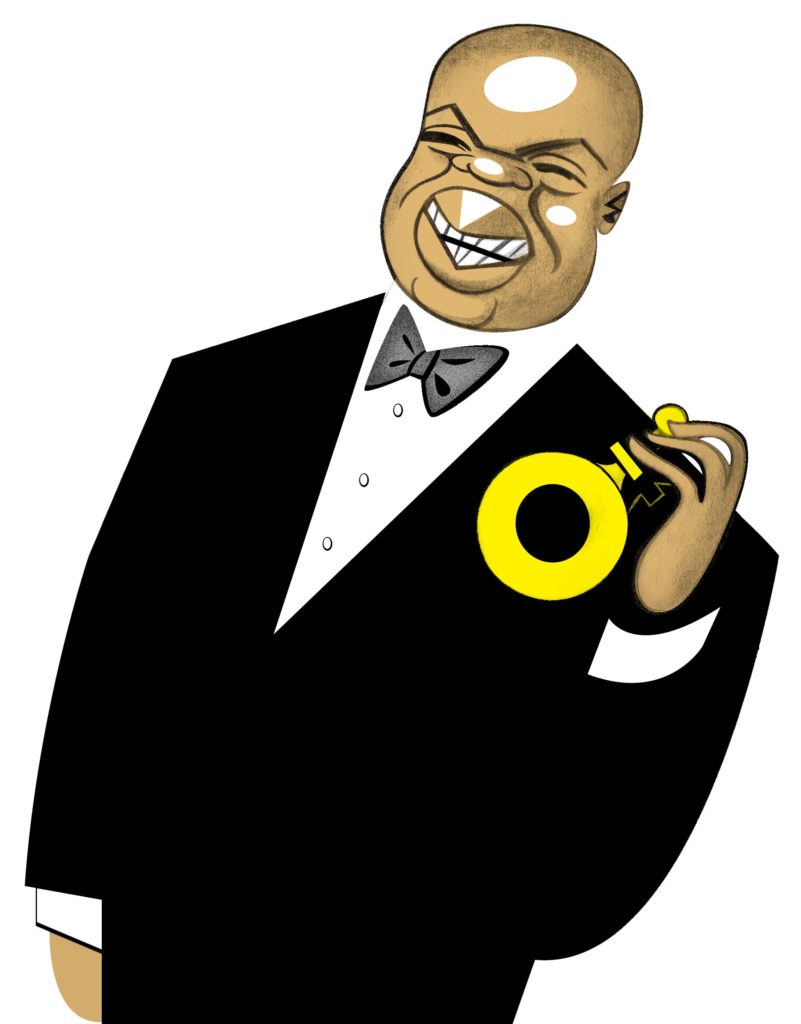
Before and alongside these country music luminaries, many other musicians and celebrities helped paved the way simply by using. Jazz icons Louis Armstrong, Miles Davis and Duke Ellington all famously and openly lit up, despite being used as an example by Henry Anslinger, the former director of the Federal Bureau of Narcotics, who was the principal architect of the US prohibition during the draconian Reefer Madness era in this country.
“Marijuana is the most violence-causing drug in the history of mankind,” Anslinger said. “There are 100,000 total marijuana smokers in the US, and most are Negroes, Hispanics, Filipinos and entertainers. Their Satanic music–jazz and swing–result from marijuana use.”
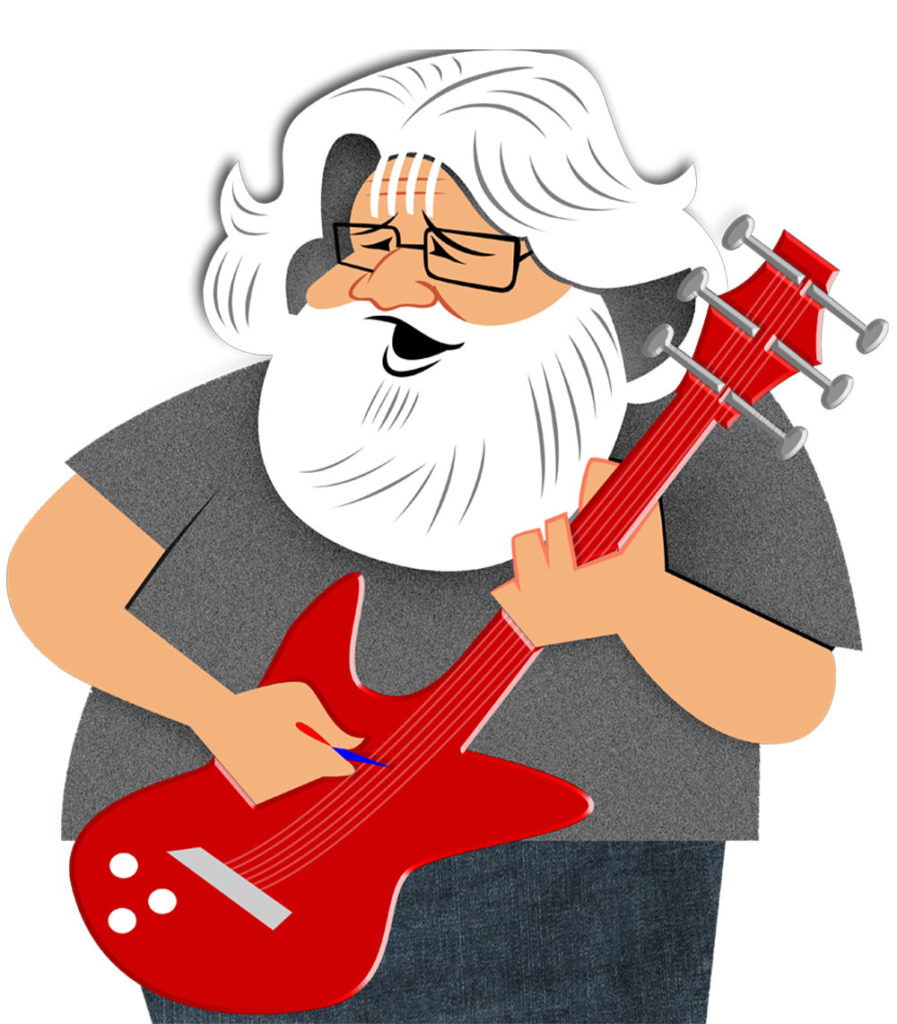
From there, Anslinger’s rhetoric and policies laid the groundwork for all-out criminalization and the eventual War on Drugs, the legacy of which still exists today, particularly in the fact that cannabis is still federally illegal in the US. In 1937, Congress passed his Marihuana Tax Act, effectively prohibiting cannabis on a federal level due to the heavy tax burden introduced.
The Controlled Substances Act (CSA), which was ratified in 1970, made cannabis illegal for good. In between, a counter-culture movement sprung up in the 1960s, in which weed was arguably a central component. From that wellspring came cannabis-friendly icons including The Grateful Dead (led by Jerry Garcia), which was the band that became the official anthem-holder of white stoners everywhere. Bob Dylan, The Beatles, Carlos Santana, The Velvet Underground, Simon and Garfunkel, Pink Floyd and The Beach Boys are other notable acts that also openly smoked and whose legacies endure today—with cannabis one of the drugs of choice of that bygone era, there are also hundreds more examples of popular figures partaking and otherwise endorsing the coveted plant.
Cannabis becoming flat-out federally illegal after the CSA’s passage didn’t stop the train of pop culture cannabis consumption. If anything, it only made it more subversive and, therefore, cool. Cheech Marin and Tommy Chong of Cheech & Chong fame were a slapstick weed-soaked silver screen duo who came to prominence in the 1970s and are still beloved as original pioneers of today’s cannabis culture. Though Bob Marley and The Wailers started producing hits in the ’60s, it was in the ’70s when the reggae sensations rose to international prominence. Their religious beliefs through Rastafari, as well as their cannabis consumption, also took center stage in their public image. Peter Tosh was also Rastafarian and a famously-pot smoking reggae contemporary of Marley’s, but with a harder political edge. To this day, his 1976 anthem “Legalize It” is still a rallying cry for tokers all over the globe, even while marijuana continues to remain largely illegal.
In more recent history, the public face of cannabis has become more widespread and representative of different cultures, though the legacy born in the ’60s and ’70s endures, particularly with longtime jam bands Phish, Widespread Panic and Dave Matthews Band. We also see its impact via the spread of reggae culture into other island communities, especially Hawaii, and more cannabis-friendly communities such as those of underground (and now legal) cannabis cultivators in northern California.
Weed’s next and arguably greatest push into mainstream popular culture came with the rise of hip-hop, which started as a music genre born out of lower-class Black communities and crossed over to mainstream appeal during the late 1980s and especially the 1990s, bringing the plant with it. Some rappers and groups, such as Snoop Dogg, Cypress Hill, Bone Thugs-N-Harmony, Method Man, Redman and Dr. Dre, dedicated entire albums with chart-topping hits specifically to the plant. Snoop has since become a bonafide cannabis icon, even starting his own media publication, Merry Jane, while Cypress Hill’s B-Real heads up his own cannabis brand and dispensary chain, Dr. Greenthumbs, named after one of his most famous songs. His signature strains sold are different phenotypes of OG Kush, which was introduced to him in the ‘90s by famous grower JoshD, who bred the Florida-born strain to prominence after its arrival in California.
Rappers today have carried that legacy forward, including Wiz Khalifa with his Kush and OJ album (and now his own legal weed brand) and Berner, who has his own veritable worldwide legal weed empire. Jay-Z owns nationwide cannabis brands and raps often about selling weed—both legal and illegal—but is also rumored to not be super into smoking it himself. Kid Cudi, Curren$y, Drake, OutKast, The Game and 2-Chainz are other notable names who’ve melded their art with their favorite plant.
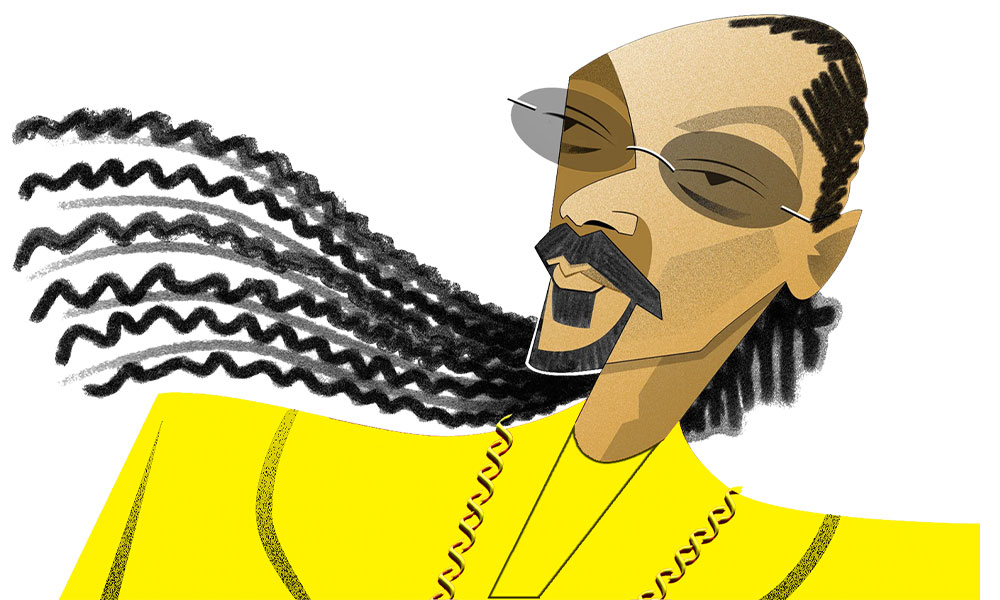
The rise of hip-hop also coincided with the birth of the internet and the advent of music television, fomenting its place not just in cannabis culture, but also in popular culture, in general, and giving it greater reach than possibly the music of the 1960s in numbers over time. It also grew alongside the golden era of stoner movies, frequently with cameos from one of the aforementioned stars: How High stars both Method Man and Red Man and is considered canon among both rap and weed fans; so is Friday, written by Ice Cube and DJ Pooh, which stars Ice Cube and comedian Chris Tucker.
Half Baked is another quintessential cannabis-fueled movie and what birthed Dave Chappelle’s career (though I’d argue that his giving up weed for his girlfriend at the end is a genuine betrayal to stoners everywhere). Harold and Kumar go to White Castle sometimes gets cast aside as dumb but is brilliant in its subtle knowledge of deep stoner culture—any movie that so prominently features the dregs of the fast-food world, much beloved by those with the munchies, is obviously clued into the quirky loves of stoners countrywide. Dazed and Confused harkens back to the more innocent times of 1970s weed, while Super Troopers gave us the iconic line, “Littering and…littering and…littering and smoking the reefer.”

There are some drawbacks to weed’s popularity in pop culture. While saturation can lead to normalization and a reduction of stigma, it has also made cannabis a bit of a punchline. Stoner depictions in various media have also perpetuated stereotypes, notably Afroman’s 2000 hit “Because I Got High,” which runs through a litany of forgetful and absentminded foibles that the rapper attributed to smoking weed. The Ashton Kutcher and Seann William Scott movie Dude, Where’s My Car? basically gives away the plot without having to watch it, funny though it is, and it’s definitely not a positive portrayal of healthy or functional cannabis consumption.
More recently, a new guard of smoke-filled movie stars has taken the old guard’s place. Seth Rogen, who today owns the lauded and legal Houseplant cannabis brand, is considered a bonafide social and political advocate for cannabis legalization. His movies have also legitimately crossed over into weed culture, including the 2008 hit Pineapple Express, which birthed an actual cultivar that remains popular to this day. His social media presence, especially during the pandemic, shows Rogen making pottery and curating tasteful cannabis accessories, a glimpse into the life of a rich and successful pothead who also happens to have good taste. Functional stoners see themselves in him—as a wealthy celebrity, Rogen may occupy a different stratosphere of life than most can ever imagine, but he’s aspirational in all the right ways by a group typically denigrated and assumed to be lazy, forgetful and generally unintelligent.
These depictions are also almost entirely male-oriented, save for Musgraves, which is also beginning to change as wider acceptance of cannabis use courses through the US and women not only are consuming more than they had in the past, but also feel more comfortable doing so in public. Pop superstar Miley Cyrus has been an avid cannabis user and publicly (sometimes controversially) so ever since she graduated into adulthood from her kid-friendly Hannah Montana days; Rihanna is a veritable weed queen, who has talked about it often in interviews and has allowed herself to be frequently photographed while smoking. Lady Gaga has come out as a fan of the plant, and so has Megan Fox, Anna Faris, Bella Thorne, Kathy Bates, Tove Lo, Cameron Diaz and Charlize Theron, among many others. The list is admittedly smaller, but likely, as in real life, there are plenty more notable women in pop culture who like to smoke weed.
Whereas in the past, using cannabis was a more counterculture act, regardless of who in pop culture was consuming, there were visibility limitations owing to the lack of access we had to cultural figures compared with how much exposure they have today. I believe the internet helped bridge the gap between culture and popular consciousness for the final leg of cannabis prohibition, which we appear to be living in today. At a certain point, being bombarded with certain images and symbols over and over has a sanitizing effect, and how much more media we consume compared with people 30-40 years ago and beyond means that we’re becoming exposed to the regularity of cannabis consumption more than at any point in history.
So, what to make of all of this cannabis consumed by the famous and influential for the better part of a century? While it’s activists and the lawmakers they lobby who are, in the end, mainly responsible for the ongoing tide of legalization in this country, it’s the plant’s ironclad presence in popular culture that has helped grease the wheels all the way along with no signs of slowing down anytime soon.
Drawn To Him
Robert Risko, America’s top magazine illustrator, debuts on our pages.
When my team at a previous magazine heard I was leaving my post as editor in chief, they asked my dear friend and easily the most celebrated magazine illustrator in the US, Robert Risko, to create a portrait of me as a goodbye gift. When the large, framed work on white canvas was given to me, a rush of emotions washed over me. “Wow, even I have a Risko now,” I thought, feeling sheer gratitude at such a beautiful and thoughtful gesture.
Risko, who’s been the chief artist at Vanity Fair for precisely four decades and whose colorful, whimsical, instantly recognizable portraits helped elevate that magazine to colossal cultural relevance (along with photographer Annie Leibovitz), is as interesting personally as the famous subjects he expertly captures. To see a Risko illustration accompany a story in VF—and later The New Yorker, Time, Rolling Stone—is to signal to the reader that not only is this story worthy of attention, it’s also worthy of the “Risko treatment.” Has there ever been a bigger compliment to a magazine artist? Others certainly agreed. In 2017, the Kennedy Center in Washington, DC held an exhibition of Risko’s iconic portraits he had completed for the Mark Twain Prize for American Humor since 2002.
When I asked Risko about possibly illustrating this pivotal feature in our “culture issue,” my friend didn’t hesitate. “Ohh, that sounds really interesting…” And just like that, Robert Risko joins the cannabis community. How cool is that? —Richard Pérez-Feria
This story was originally published in issue 47 of the the print edition of Cannabis Now.






